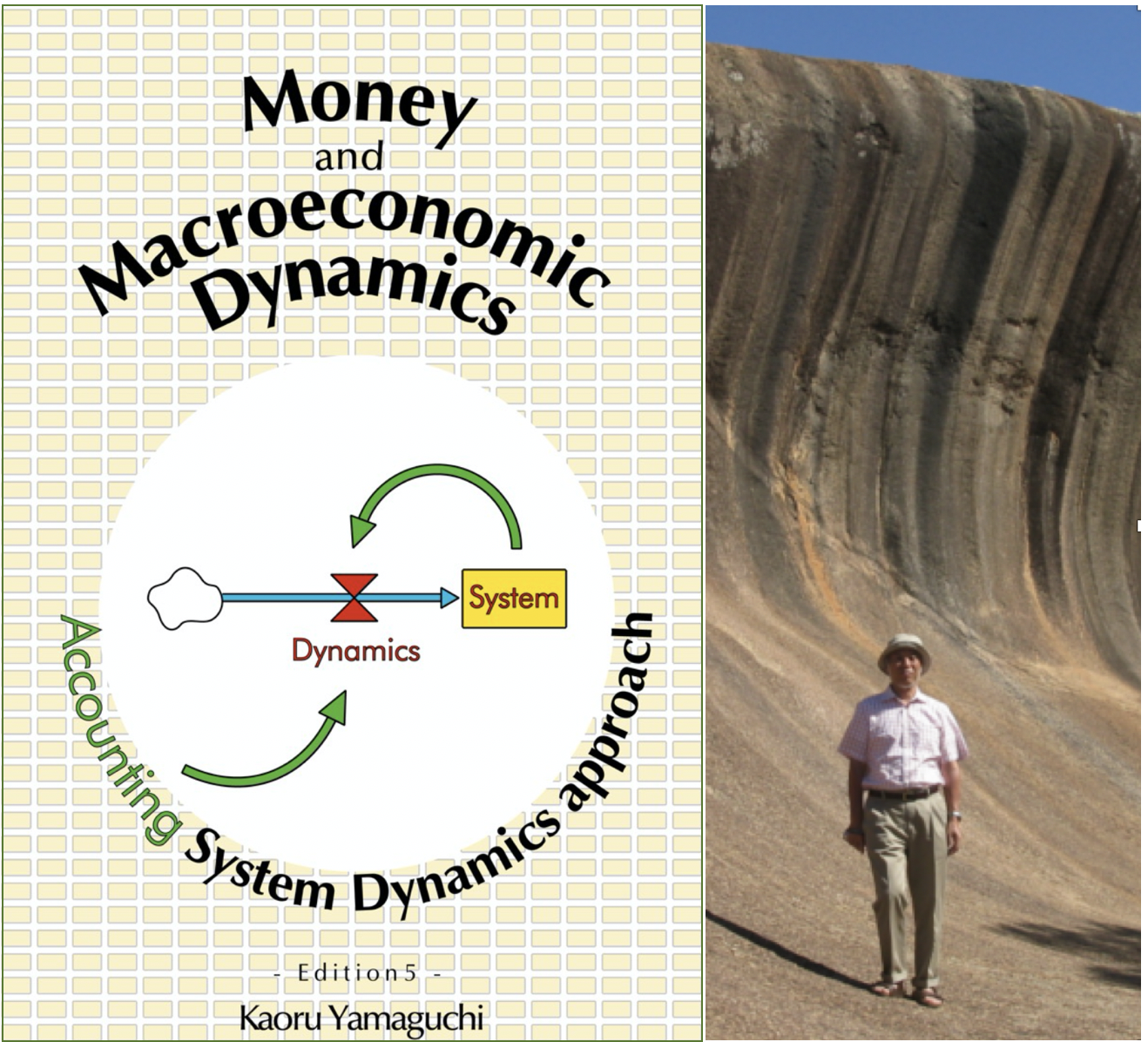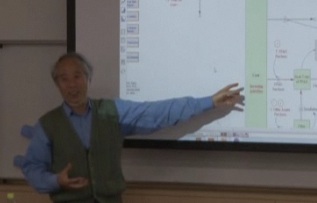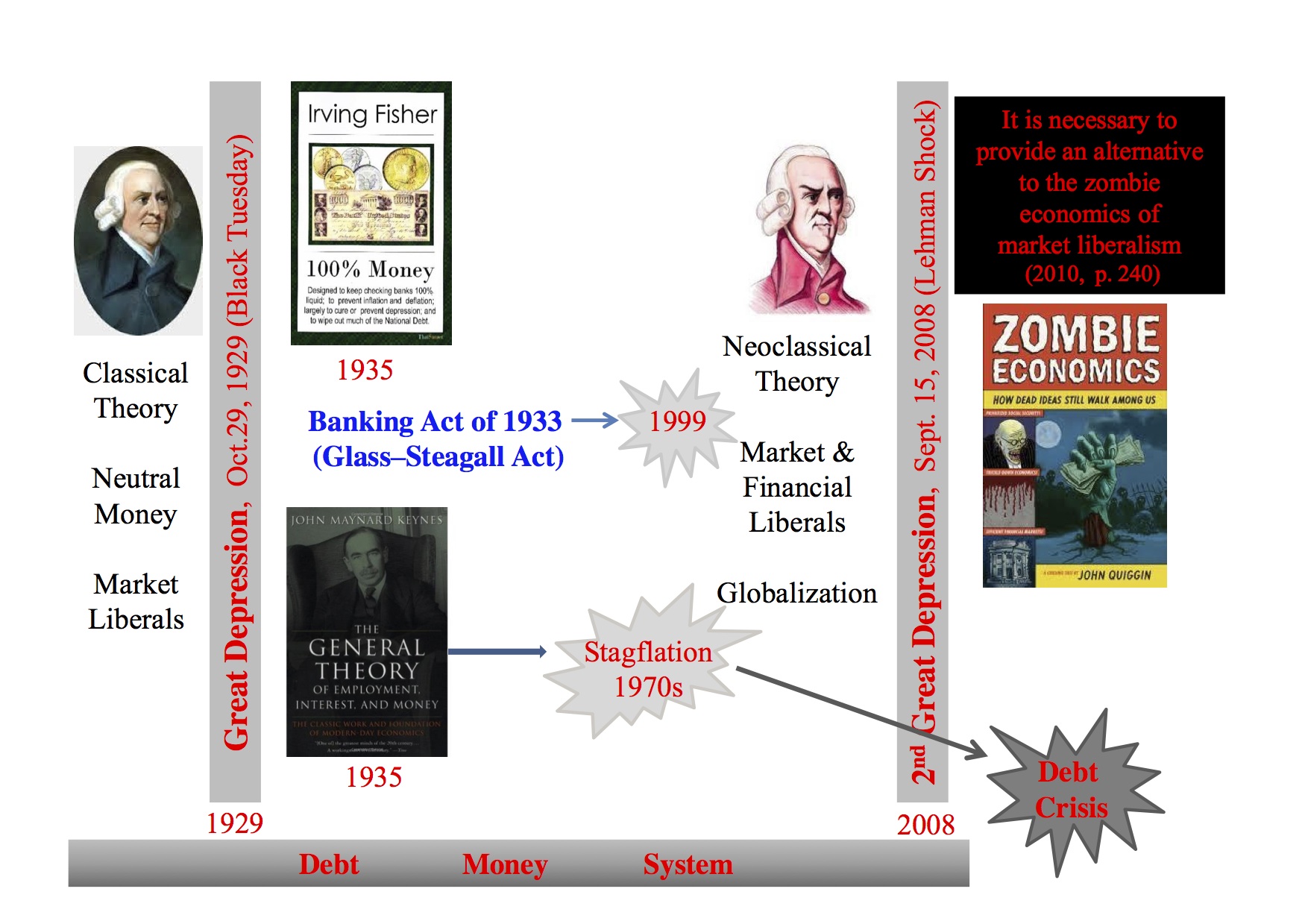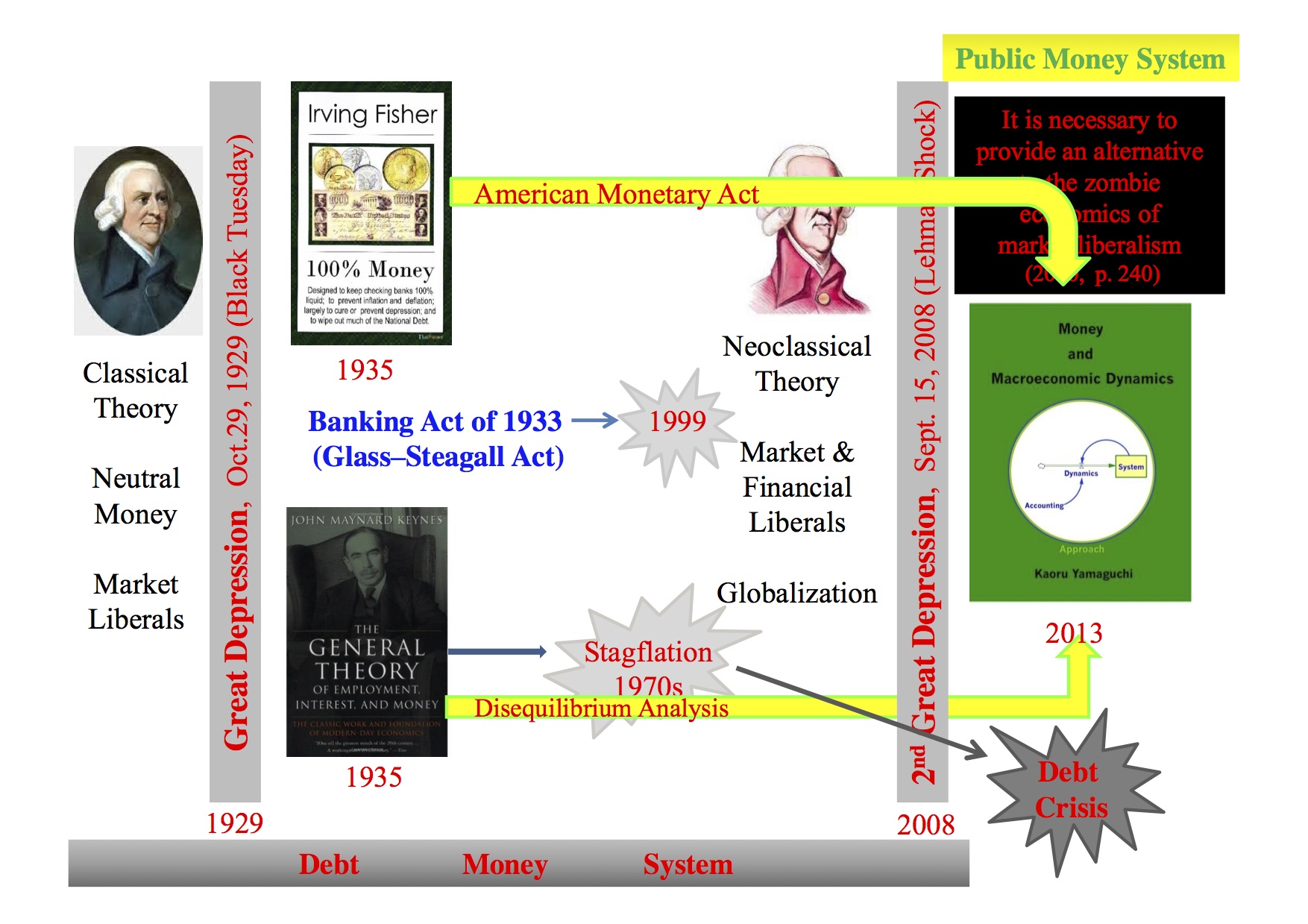


|
Money and Macroeconomic
Dynamics - Accounting
System Dynamics Approach -
Edition 5.3 Update on May 10, 2021 (free PDF on-line version only)
The
entire book of edition 5.3 is now hyper-linked
to jump to any chapter and section easily.
Accordingly, chapter copies of edition 5.2 are
no longer available. |
|
| Preface | My Off-Rad Journey for A Better World
(Contents included) Preface to Edition 5.2 |
| Part I: Accounting System Dynamics | |
| Chapter 1 |
System Dynamics (SD models 1) Model Guide |
| Chapter 2 |
Demand and Supply (SD models 2) |
| Chapter 3 | Accounting System Dynamics (SD models 3) |
| Part II: Debt
Money System |
|
| Chapter 4 | Macroeconomic System Overview (SD models 4) |
| Chapter 5 | Money and Its Creation (SD models 5) |
| Chapter 6 | Money as Total Debts (Figures 6) (SD models 6) |
| Chapter 7 | Interest and Equity (SD models 7) |
| Part III: Macroeconomic
System of Debt Money |
|
| Chapter 8 | Aggregate
Demand Equilibria (SD
models 8) |
| Chapter 9 | Integration of Real and Monetary
Economies (SD
models 9) |
| Chapter 10 | A Macroeconomic System (SD
models 10) |
| Part IV: Open Macroeconomic Systems of Debt Money | |
| Chapter 11 | Balance of Payments and Foreign
Exchange (SD
models 11) |
| Chapter 12 | Open Macroeconomies as A Closed System
(SD
models 12) |
| Part V: Macroeconomic System of Public Money | |
| Chapter 13 | Designing A Public Money System (SD models 13) |
| Chapter 14 | Workings of A Public Money System (SD
model 14) |
| Chapter 15 | Monetary and Financial Stability (SD models 15) |
| Chapter
16 |
Public
Money and Sustainability |
| Chapter 17 | Transition
to the Public Money System (SD models 17) |
| Part VI: Electronic Public Money | |
| Chapter 18 | Electronic
Pubic Money
(SD
models 18) (Bibliography included) |
| All SD Macroeconomic
Models are attached to the book in CD. Unlisted models are available directly from the author at kaoru3860@gmail.com |
|
| Accounting
System Dynamics - Guest Lectures at the Graduate School of System Design and Management, Keio University, Tokyo, Feb. 3, 2014 |
|
 |
|
|
Please view
along with Chaper 3 and Lecture
Slides |
|
Irving
Fisher. 100% Money, The City Printing Company, New
Haven, 1935.
John M. Keynes. The General Theory of Employment, Interest and Money, Preface, December 13, 1935.
1. Robust and comprehensive analytical method of the Accounting System Dynamics is applied for the first time in macroeconomic analysis.
- Accounting System: robust double-entry
booking foundation of social science.
- System
Dynamics: dynamic foundation of differential equations in
natural
2.
Money always sits in the center of the macroeconomic
analysis, allowing an inquiry into dynamic macroeconomic
behaviors that have been unattainable under a traditional
approach of money as an incidental addition to the
economy.
3. Current macroeconomic system is identified as a debt money system whose structure causes not only recessions and unemployment, but also financial and debt crises. To avoid these economic instabilities and disasters, an alternative system is proposed as a public money system, and comparative analyses of these two systems are conducted.
4. All analyses are based on the simulations of the system dynamics models included in the attached CD, so that readers can confirm them easily by running simulations by themselves. In addition they can perform their own scenario analyses on the basis of their own economic interests and economic hypotheses.
5. All models are built with standard frameworks found in macroeconomic textbooks, so that they can be easily expanded to the readers' behavioral sophistications as well as their case studies of real economies.

